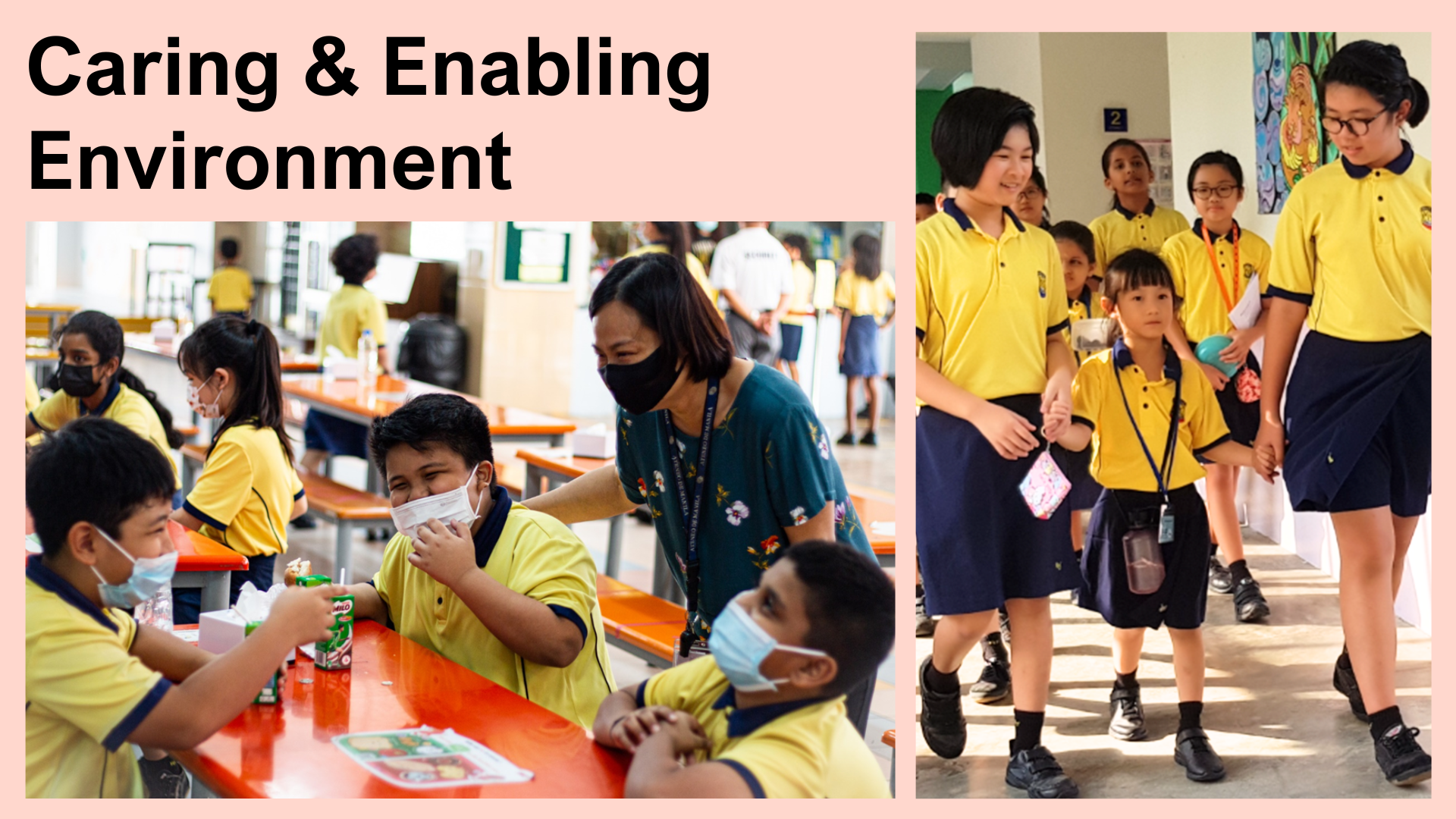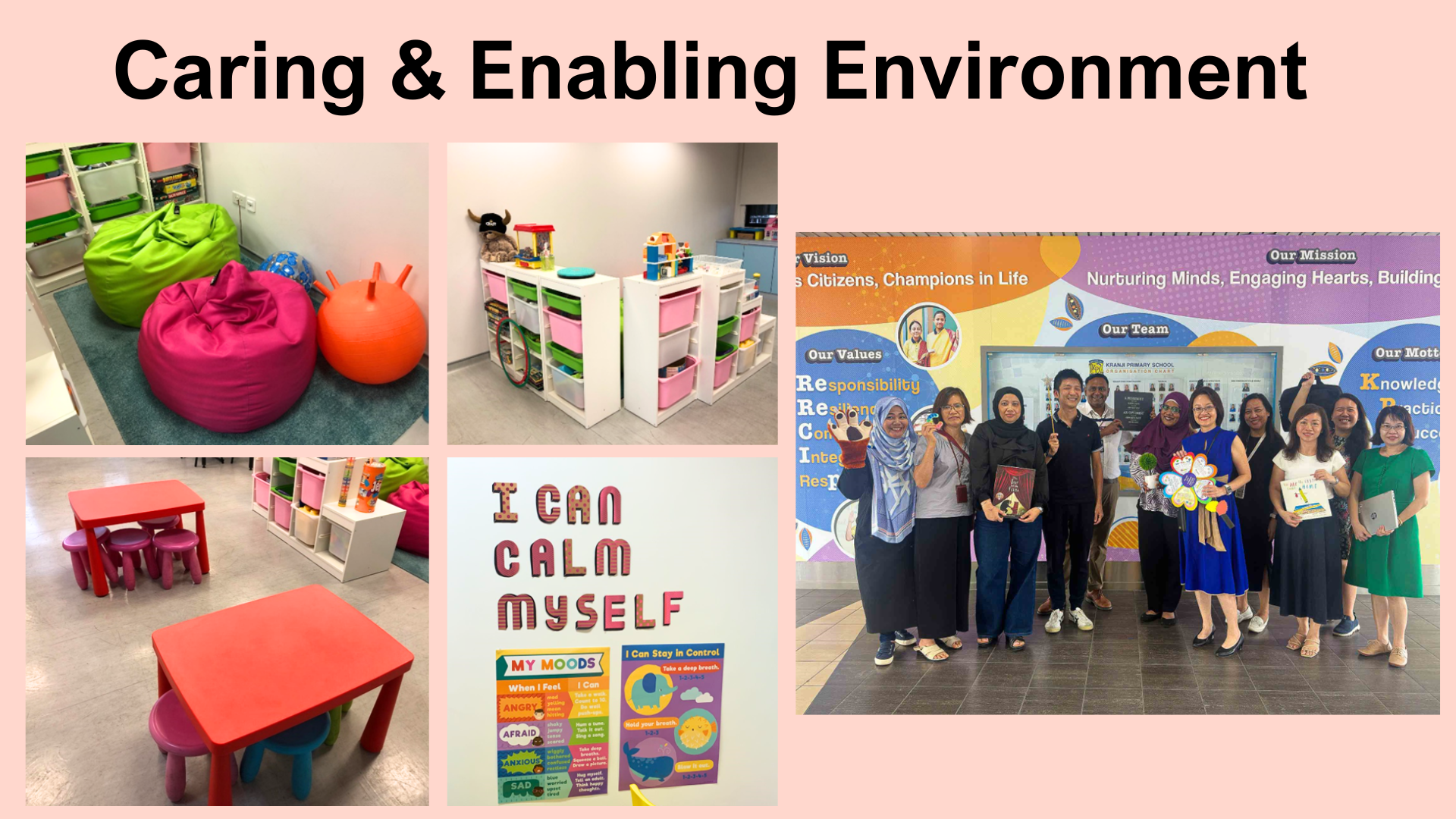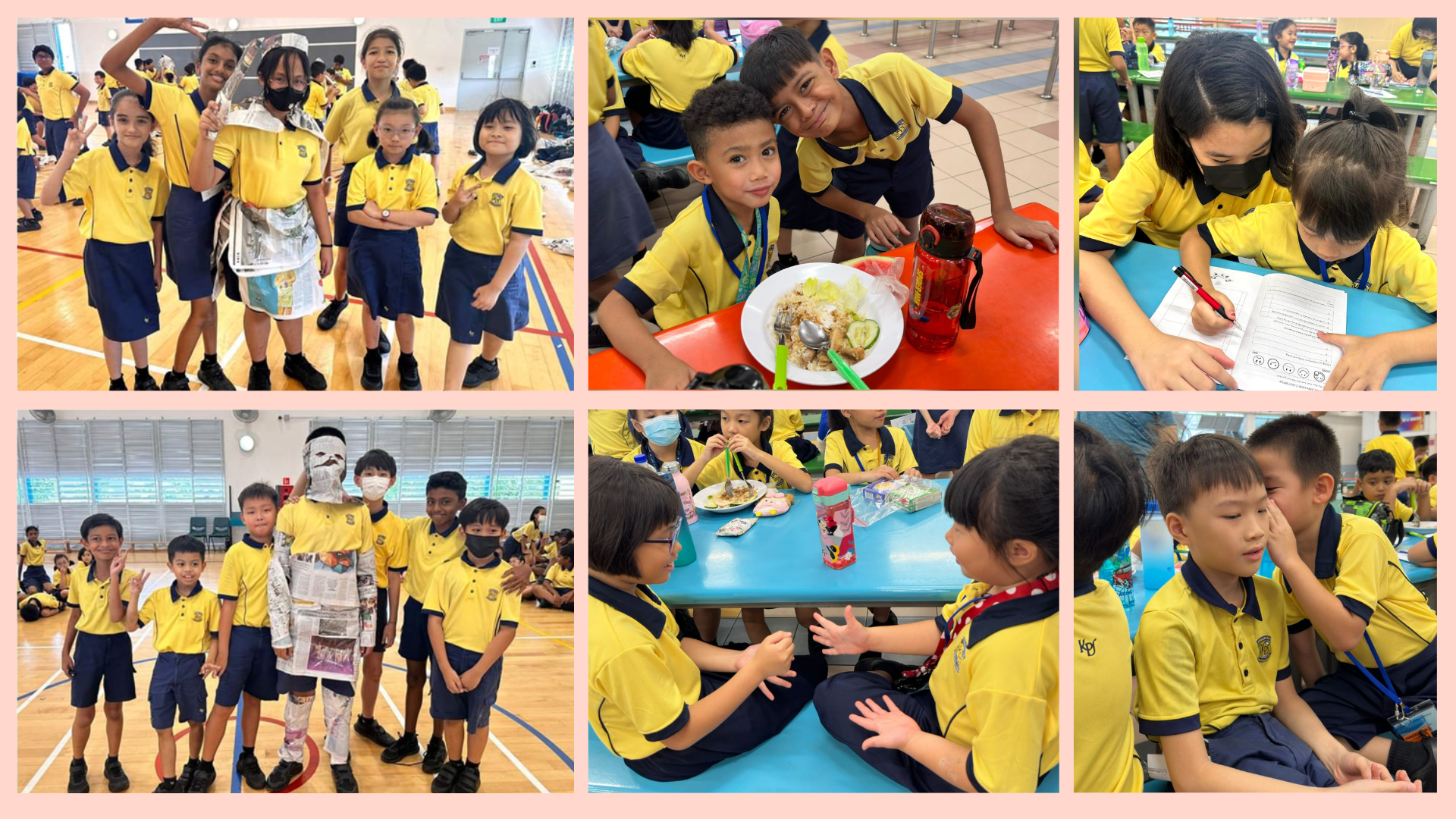Environment
Environment
1. Caring and Enabling Environment
As humans, we have basic psychological needs to connect with others, feel emotionally and physically safe, have a sense of belonging, exercise autonomy, and experience competence. These fundamental needs shape our motivation and have important implications for learning and development. Schools are places where these needs can be met by building a caring community through positive relationships among staff and students where there is mutual respect, care, and support for one another. When these needs are met, students feel more connected to their school and are motivated to own their learning and school community together.
A caring and enabling school environment, is one that is characterised by caring and responsible leadership, a pervasive growth mindset, emotional and physical safety, and a focus on learning and development of students, teachers and all other members of the school community. In such a rich learning environment, our students can cultivate dispositions of character and citizenship, and social-emotional well-being, as well as feel empowered to become their best selves.
Positive interpersonal relationships between teachers and students and students and students, contribute significantly to the students’ learning process. In positive Teacher-Student Relationships (TSR), students perceive they are respected, supported and valued by their teachers. When students experience positive TSR, they are more engaged in school and able to sustain their learning motivation. When teachers build positive relationships with their students, our students feel a sense of security which allows them to engage more actively in interactions within the school environment, shaping their character, and social-emotional well-being and development.
Supportive peer relationships form a critical part of the network of positive relationships in school. Peers are a significant source of support for most students as they are more likely to turn to their friends rather than adults for help. With Peer Support and Relationships (PSR), students participate in fostering strong bonds of friendships and a sense of belonging to the school community (peer bonding), provide practical help and social-emotional support to one another (peer helping) and promote positive mindsets, prosocial behaviours and well-being (peer influencing). Taken together, these efforts contribute to the building of a caring and supportive peer culture, by students for students.


2. Student-centricity
We place students at the heart of all our efforts, catering to their academic needs, their developmental needs and their social-emotional well-being, as we develop their Knowledge, Skills, Attitudes and Values.
In the area of academic development, we have extensive programmes to cater to children with different academic abilities and needs. For the masses, our curriculum provides a good grounding in the various subject disciplines and each child’s attainment of learning outcomes at every level is closely monitored. Teachers deploy a range of strategies in differentiated instruction, assessment and educational technology to excite and engage students in the classroom. Beyond the formal curriculum, the school provides exposure and enrichment in the informal curriculum through department-based signature programmes that are conducted both in and out of curriculum time. Our talent development programmes across the various domains cater to students who are talented. Platforms for development include enrichment programmes like Olympiad training and opportunities to represent the school in competitions. For our students who require greater support, the school has a full team of dedicated personnel who are well trained to provide the necessary support, as well as dedicated programmes like Learning Support Programmes (English, Math and Mother Tongue) to help these children close their learning gaps and/or manage their learning needs.
In the non-academic area, the school is committed to nurture our students’ character growth and help to socialise them into morally upright individuals, and responsible and active citizens. The essence of student-centricity is to seek to understand students’ needs and interests when designing learning experiences, focusing on student engagement and voice. In this way, we empower them to derive personal meaning from their learning experiences.


3. Student Ownership & Agency
To establish an effective learning environment, it is critical to take into account student voices, and co-design learning approaches and activities that cater to their needs and interests. Creating space for students to be heard and encouraged to play an active role in what and how they learn, provides opportunities for them to develop agency or self-directedness, responsibility, and ownership of their learning. Student involvement in self-assessment, and leading their own learning directions, as well as participation in the planning and implementation of some aspects of their learning, e.g. My Passion Project, Values in Action (VIA) activities, Co-curricular activities (CCAs), peer-support initiatives and other relevant aspects, will create opportunities for them to become self-directed learners, develop leadership competencies, as well as a sense of belonging to their school community and the motivation to make a positive difference.
Metacognitive strategies are used to help students make their thinking visible, apply their learning and guide them in high quality reflection to facilitate deep learning and internalisation. Deep learning manifests in the motivation to act and make a positive difference.


